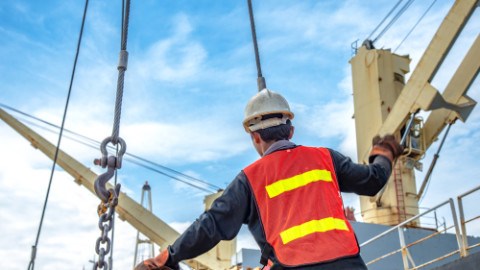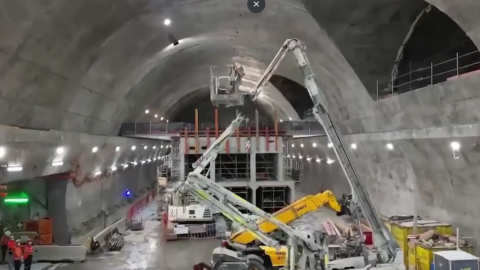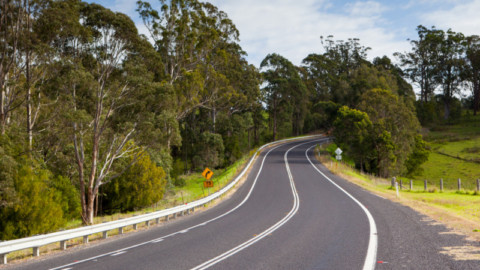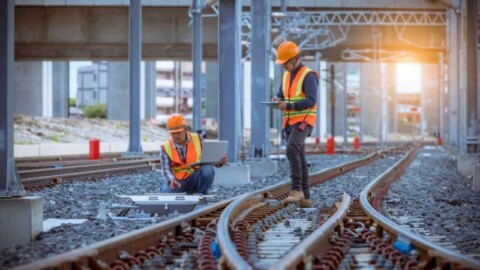The 2021 Critical Infrastructure Summit ran over two weeks in April with four Virtual Conferences exploring the industry’s biggest challenges and predictions across the entire infrastructure lifecycle.
The Virtual Conferences for 2021 included Critical Infrastructure: State of play; Asset Management for Critical Infrastructure; Disaster Management; and the Future of Infrastructure. Close to 900 industry professionals registered for the Summit which was free to attend for infrastructure asset owners, government and not-for-profits.
This year we were lucky to have some incredible companies supporting the delivery of the Summit, with our 2021 sponsors including Summit Partner Secolve; Session Partners Infor and OSIsoft; Major Sponsor In2 Project Management; Panel Sponsors Nozomi Networks, Nearmap and MOXA; and Summit Sponsor BSI Group. Here’s what went down across the four virtual events.
Critical infrastructure: State of Play
State of Play was the Summit’s keynote session, looking at the current state of the industry and the biggest issues currently facing Australia’s critical infrastructure. The keynote speaker Richard Wankmuller, CEO of Inland Rail, gave a great update on the Inland Rail project.
He looked at the benefits the increased investment will bring communities and customers; the completed Parkes to Narromine section; current and future works between Tottenham to Albury in Victoria, Narrabri to North Star in NSW and the 128km section from Gowrie to Kagaru in QLD; how the delivery strategy has been transformed; as well as what’s in store for 2021.
Of particular interest to our delegates was the detail Richard gave around the procurement status, as the project has over $8 billion in procurement, with $2 billion of works having been awarded since it began.
Jonathan Cartledge, Director of Policy and Research at Infrastructure Australia, delivered a presentation on opportunities for resilience in a year of uncertainty. This provided some fantastic information and advice on an infrastructure-led response to COVID-19. He explored the unique opportunities from the pandemic that governments should consider in policy, planning and investment; the challenges that will need to be addressed as a priority; a systemic approach to resilience including touching on upcoming IA reports on short-term actions for asset owners, longer term actions for all stakeholders, and Sustainability Principles.
Jonathan also talked about understanding the capacity of the market and gave some insight into the 2021 Australian Infrastructure Plan. Lisa McLean, CEO of NSW Circular, broke down the circular economy approach and how the Australian infrastructure industry can make the most out of opportunities in next-generation circular infrastructure, a topic that is not only increasingly important, but one that is starting to gain more traction in infrastructure projects.
Then the event wrapped up with our industry panel The last six months in infrastructure, which was sponsored by Nozomi Networks. We were joined by James Goodwin, CEO, Australian Airports Association; Jon Davies, CEO, Australian Constructors Association; Michel Masson, CEO, Infrastructure Victoria; and Marty Rickard, Senior Customer Success Advisor, Nozomi Networks.
The panel discussion could have gone on for hours, but we were lucky to discuss topics including the state of the aviation sector and what’s needed moving forward in infrastructure and processes; the construction sector’s role in economic recovery; risk management in the operational technology space; the sector opportunities to look out for; the importance of data and collaboration; and much more.
Laith Shahin, Founder and CEO at Secolve, said it was exciting to connect with, and hear from, so many critical asset thought leaders and industry experts.
“The continued growth of the critical infrastructure sector will create new cyber security threats and ongoing challenges. As such, cyber security is of paramount importance and achieving visibility into the assets will be critical to protecting the sector against these cyber risks,” Mr Shahin said.
Asset Management for Critical Infrastructure
Asset Management for Critical Infrastructure is one of our longest running conferences and has been held both in person and virtually.
The conference brings together utility and infrastructure leaders to discuss the most pressing issues in asset management. Infor was the Session Partner for the conference and the Major Sponsor was In2 Project Management.
Julian Watts, Director, Engineering and Asset Management Advisory, KPMG, opened the event with his keynote presentation on operating models and asset-intensive organisational design for success.
This was a fantastic inclusion in the asset management conversation and provided delegates with some great advice on change at an organisational level. Julian explored drivers for change and enablers for good asset management; typical approaches to organisation design; developing organisation design principles; a path to a functional model; and reference models for a connected enterprise; among other topics – it really gave delegates lots of rich information on the topic.
Then Damien White, Group Executive, Safety, Engineering and Technology, Australian Rail Track Corporation (ARTC), looked at ARTC’s system-wide deployment of the Advanced Train Management System (ATMS). He talked about how trains are currently managed and the benefits the ATMS system is providing by removing the reliance on trackside infrastructure to regulate the passage of trains.
We also had an interactive industry panel on digital asset management, sponsored by MOXA. Our panellists included Dusan Stojkovic, Project Manager and FiBridge Product Lead, VicTrack; Angelo Fiumara, Digital Asset Manager, Essential Energy; Tyrone Toole, Chief Technology Leader, Road Asset Performance, Australian Road Research Board (ARRB); and Sever Sudakov, Solution Architect, MOXA.
It was great to have a wide variety of sectors represented here, from road and rail to power and utilities, and the discussion ranged from digital twins and drones to the importance of data collection for more informed decision-making, the impacts of cybersecurity, and much more.
David Whitfield, Asset Management & Enterprise Solutions Specialist at Infor, said that in recent years, rapidly evolving technology surrounding critical infrastructure, its systems and assets is changing the mindset, strategies and future planning for infrastructure asset managers.
“Connected, intelligent, integrated systems, the availability of inexpensive, large data storage capacity, AI and machine learning, and the adoption of cloud-based delivery of solutions has resulted in critical infrastructure asse managers facing a ‘quantum leap’ in the way we design, build, construct and operate a multitude of systems and assets across our society today.
“It’s no longer enough for asset managers to keep assets ‘up’. The myriad of data now able to be collectedfrom asset strategies and activities is delivering a new value right across the business and is critical in supporting organisational business goals including procurement, finance – and capital investment strategies.”
Disaster Management
Disaster management is such an important topic for the infrastructure industry, especially given the challenges it’s faced over the past year. Even aside from the COVID-19 pandemic, Australia’s critical infrastructure has faced natural disasters from fires to floods, as well as many other challenges such as cyber attacks.
The Disaster Management conference content was aimed at helping critical services prepare, survive and thrive in the face of major disaster events. It kicked off with Toby Kent, Co-founder of EllisKent and Chair of the Future Business Council, who presented on societal resilience and critical infrastructure. As highlighted in Toby’s presentation, the conference was as much about infrastructure resilience as it was disaster management.
Toby explored a framework for considering resilience and the seven qualities of resilience, as well as the relationship between critical infrastructure, chronic stresses and acute shocks.
Our second speaker Sam Kernaghan, Director of Resilience Program at the Committee for Sydney, further built on these ideas through his presentation which looked at rebuilding after disaster events – developing a long-term plan to reduce the cycle of disaster, response, and recovery.
Sam talked about where we need urban resilience; how we can reduce urban disaster risk; a risk-informed, system-based approach; understanding the community’s changing vulnerability; leveraging existing assets; and the upcoming leadership opportunities around resilience for Sydney.
The final section of the conference was an industry panel looking at future-proofing Australia’s infrastructure, sponsored by Nearmap. The panellists were Penny Joseph, Head of Resilience and Climate Change Adaptation at Sydney Water; Fiona Dunk, Group Crisis, Emergency and Security Manager at Jemena; and Tom Celinski, Chief Technology Officer at Nearmap.
The panel looked at a wide range of topics including the impacts of COVID-19; gaps in Australia’s disaster preparedness; the role of data; climate change and bushfire mitigation; cyber security; and more. It was great having leaders from across the infrastructure sectors, including water, energy and technology, represented in this discussion.
Future of infrastructure
The final event Future of Infrastructure was a great way to wrap up all of the topics that were covered over the Summit, as we took a look at what’s next for the infrastructure industry, with our Session Partner OSIsoft.
Yong The, Regional Manager, Oceania at OSIsoft, said that when you evaluate the challenges we face for the next decade, they affect our economies and society more than ever before.
“We now must worry about how weather, pandemics, cyber attacks, and environmental requirements impact on our ability to provide available, reliable and safe infrastructure. The Future of Infrastructure conference is a tool to share and learn about facing these challenges.
“We know there is a connected flow of data that helps us meet these new challenges, and this event helps us connect with our peers and partners to share ideas and fight these challenges as a collective team.”
Nicola Grayson, CEO of Consult Australia, delivered the keynote presentation on how the infrastructure industry can meet economic recovery demand in 2021 and beyond. Her presentation looked at industry capacity when it comes to civil engineering roles and the challenges the industry is facing when it comes to people and culture, as well as what Australia’s infrastructure industry could be doing to support increasing demand and ensuring we have enough skilled workers.
Our second speaker Genéne Kleppe, CEO of Digital Twinning Australia, then explored what value chain synchronising digital twins will look like in the future and why their data will continue to generate equity.
Digital twins are continuing to increase in use and popularity across different infrastructure sectors and Genéne gave a fantastic breakdown of what’s next, as well as a few case studies from utilities and transport.
Genéne’s presentation also linked back to points made by speakers from across all four of the Critical Infrastructure Summit conferences which was a great addition to tie everything together.
The event concluded with our industry panel on building our future cities and ensuring they are connected, sustainable and accessible, which was sponsored by Nearmap. Our panellists were Damian Gould, CEO, Building Queensland; Marion Terrill, Transport and Cities Program Director, Grattan Institute Melbourne; and Stephen Neale, Product Manager – 3D, Nearmap.
These panellists offered great insight into the future of how we plan our cities and covered a wide variety of topics. These included honest thoughts on the infrastructure-led recovery; the biggest risks facing Australia’s infrastructure in 2021; the technological advancements that will have the biggest impact; the management and maintenance of existing assets; what makes a good business case; and opportunities to increase sustainability and accessibility.
What’s next for the Critical Infrastructure Summit?
With this iteration of the Critical Infrastructure Summit now finished, Infrastructure magazine has now started planning its next virtual event. Running under the Critical Infrastructure Summit umbrella, our next event is the Critical Infrastructure: Digitisation Series.
This series will feature two Virtual Conferences in August, looking at different sides of digital transformation: the digital technologies that are being employed in the design and construction of infrastructure; as well as the infrastructure being built to enable Australia’s digital transformation.
This is a huge topic in the industry right now so keep an eye out on the Infrastructure website and weekly newsletter for more details when the event is launched.
Missed watching the Critical Infrastructure Summit?
All four of the Virtual Conferences were recorded, and registered delegates are able to watch them on demand on the official event platform Hubilo. If you’re not already registered, head to www.critical-infrastructure.com.au to sign up for access.






















